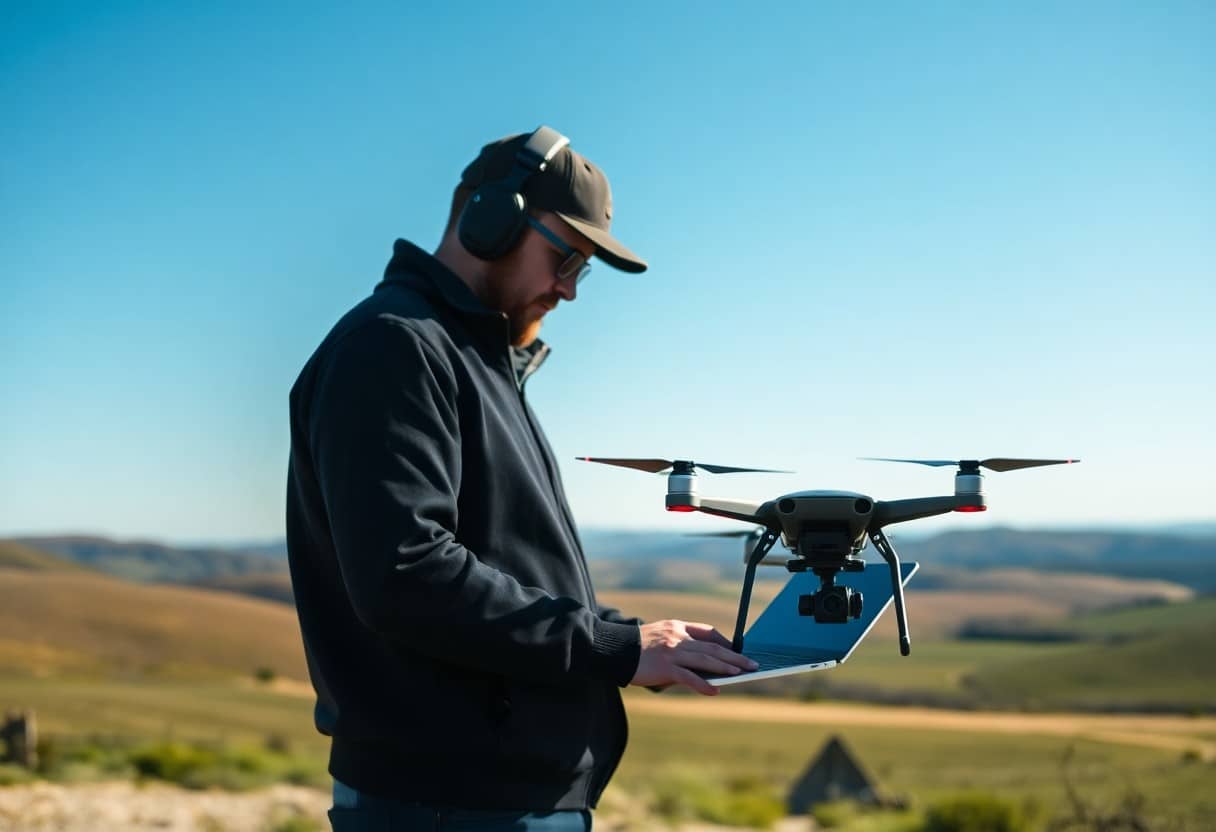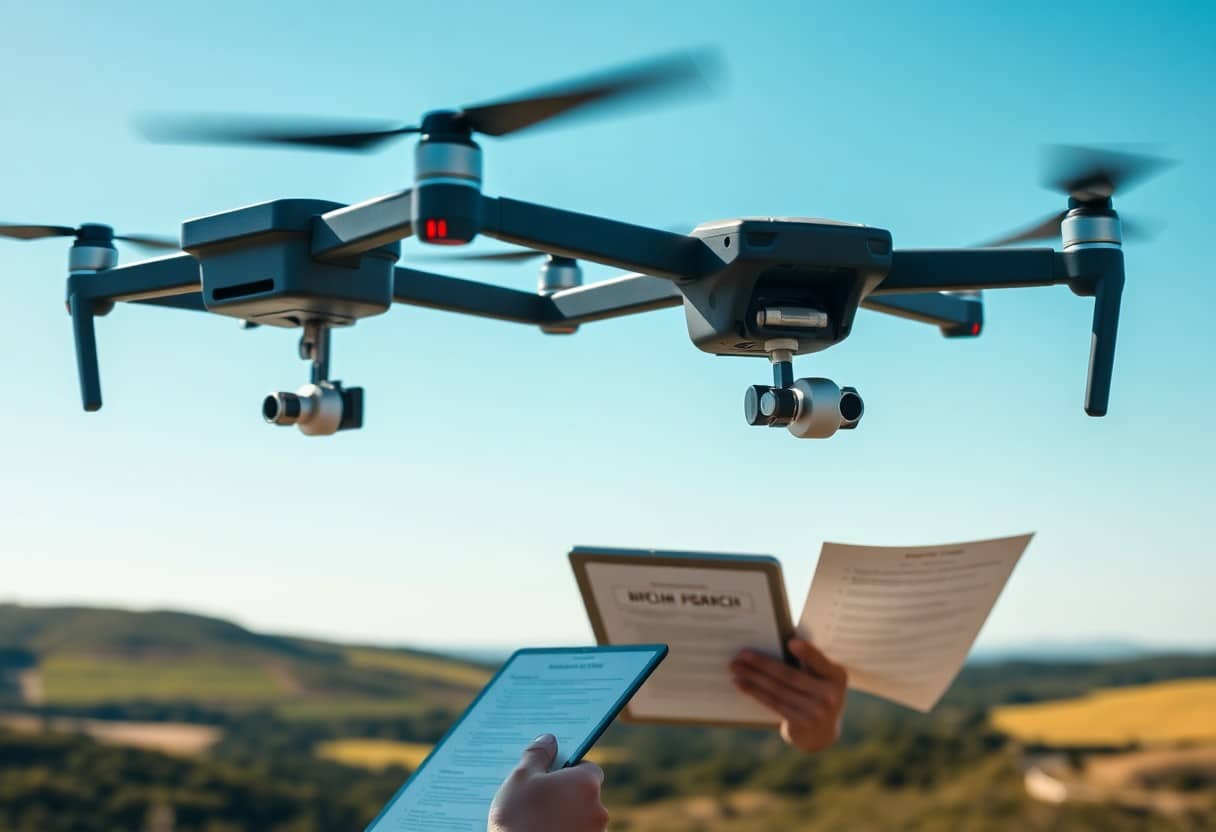The Ultimate 10-Step Drone Photography Technique
In this article, you will learn toTen Key Stepsto improve your drone photography skills. Whether you're a beginner or an experienced operator, these steps will help you in theContentGet better results and angles of view while ensuring your safety. Master these techniques and you'll be able to create stunning visuals that will stand out in the world of drone photography.
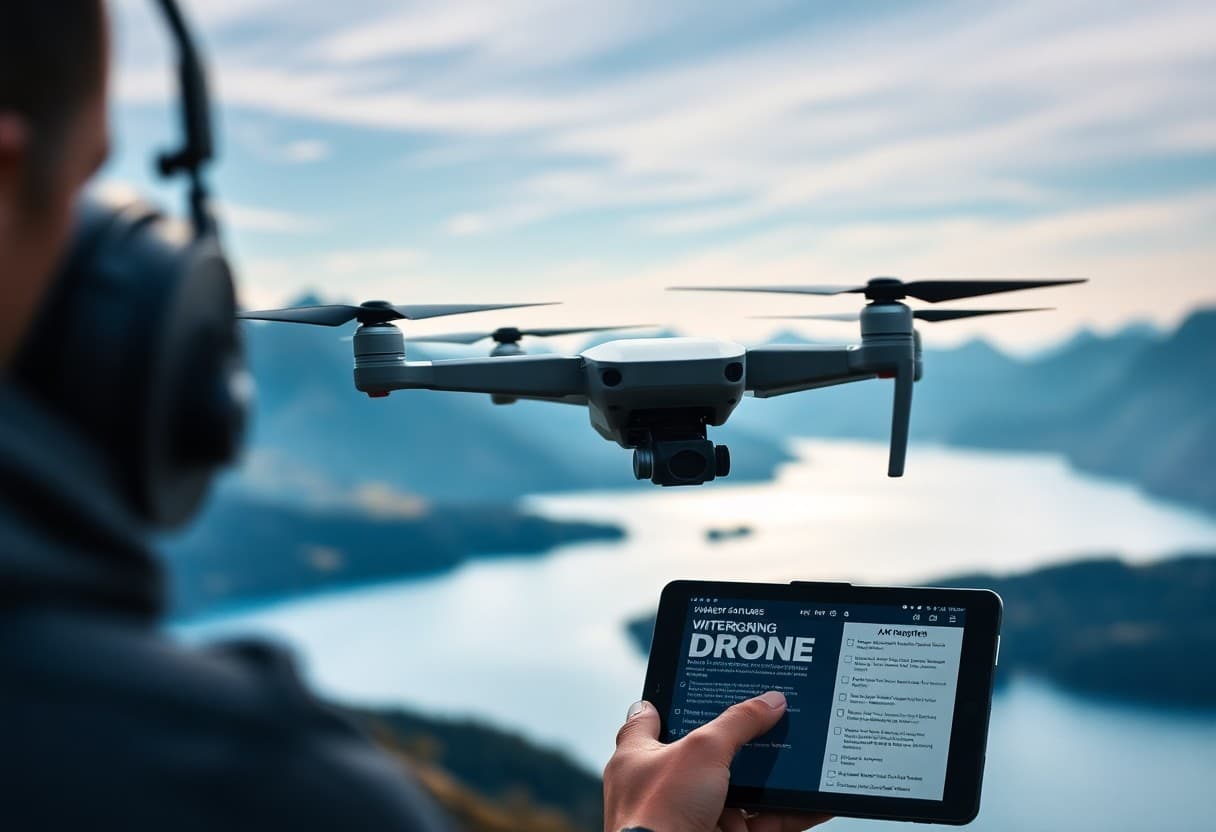
Key Points:
- Equipment Selection: Learn about the different types of drones and their photography features and choose the one that suits your needs.
- Shooting Program: Make a detailed plan before the shoot, including the scene, angle and time of day to get the best results.
- Flying Techniques: Practice basic flying skills to ensure stable control and smooth operation of the drone.
- Lens Motion: Learn how to create various camera movements such as panning, lifting and zooming to enhance your movie.
- Light Management: Pay attention to the lighting conditions when taking pictures and choose the best time and angle for taking pictures.
- Post-production: Master video editing skills to enhance the quality and artistic effect of your videos.
- Safety & Compliance: Know your local drone operating rules and safety requirements to protect yourself and others.
Research local regulations
Before you start drone photography, it's important to know the laws and regulations in your area. Each country and region may have different requirements for flying a drone, so carefully researching and following these regulations can help you avoid potential legal trouble and fines.
Understanding Airspace Rules
You need to familiarize yourself with the type of airspace in which your drone will be flying, including restricted areas and safe altitudes. Different airspace may have different flight restrictions to ensure that you areOperation in suitable airspaceIt's important to keep not only yourself safe, but other airplanes as well.
Check for local restrictions
As the popularity of drones has increased, so have the restrictions on their use in various locations. You need to check if there are any specific geographical restrictions such asNot allowed to fly in certain areasThese areas may include areas near airports, military installations, or other private property.
When checking for local restrictions, pay particular attention to announcements made by the local government or relevant authorities, which will clearly mark theNo-go areas for drone flights. In addition, certain cities or neighborhoods may also have their own regulations restricting the use of drones at certain times or occasions. Therefore, doing your homework ahead of time and understanding the laws and restrictions will not only help you avoid legal issues, but will also ensure that your drone photography goes smoothly, making your creations safer and more legal.
Choosing the right drone
Prior to drone photography, selecting theSuitable DronesIt is very important to consider the type, weight and features of your drone to ensure that it can adapt to your shooting environment. Consider the type, weight, and features of your drone based on your shooting needs to make sure it can adapt to your shooting environment. Different drones have different operating difficulties and price ranges soBe clear about your budget and needswill help you make the best choices.
Evaluating Camera Functions
When choosing a drone.Camera FunctionsIt is one of the factors that need to be emphasized. Ensure that the camera of your chosen drone has the right shooting resolution and image stability, which will improve the quality of your shots. Consider whether the drone supports 4K shooting, zoom function and low-light shooting performance to meet your potential shooting needs.
Evaluate battery life
The battery life of your drone is critical to the duration of your photo lag. When you choose a drone, theConfirm the battery lifeThe battery life of a professional drone is usually longer, but it is important to weigh this against your filming needs. Typically, professional-grade drones have longer battery life, but weigh that against your shooting needs.
Long battery life allows you to capture more footage and reduce the hassle of frequent charging. Whether your drone is used for professional or recreational purposes, the battery life of the drone will allow you to take more shots.Typical battery life is 20 to 30 minutesThis is the ideal range. If you want to shoot for a long period of time, consider purchasing additional batteries to replace them during the shooting process, which will increase the efficiency of shooting and avoid interruption of shooting due to insufficient power.
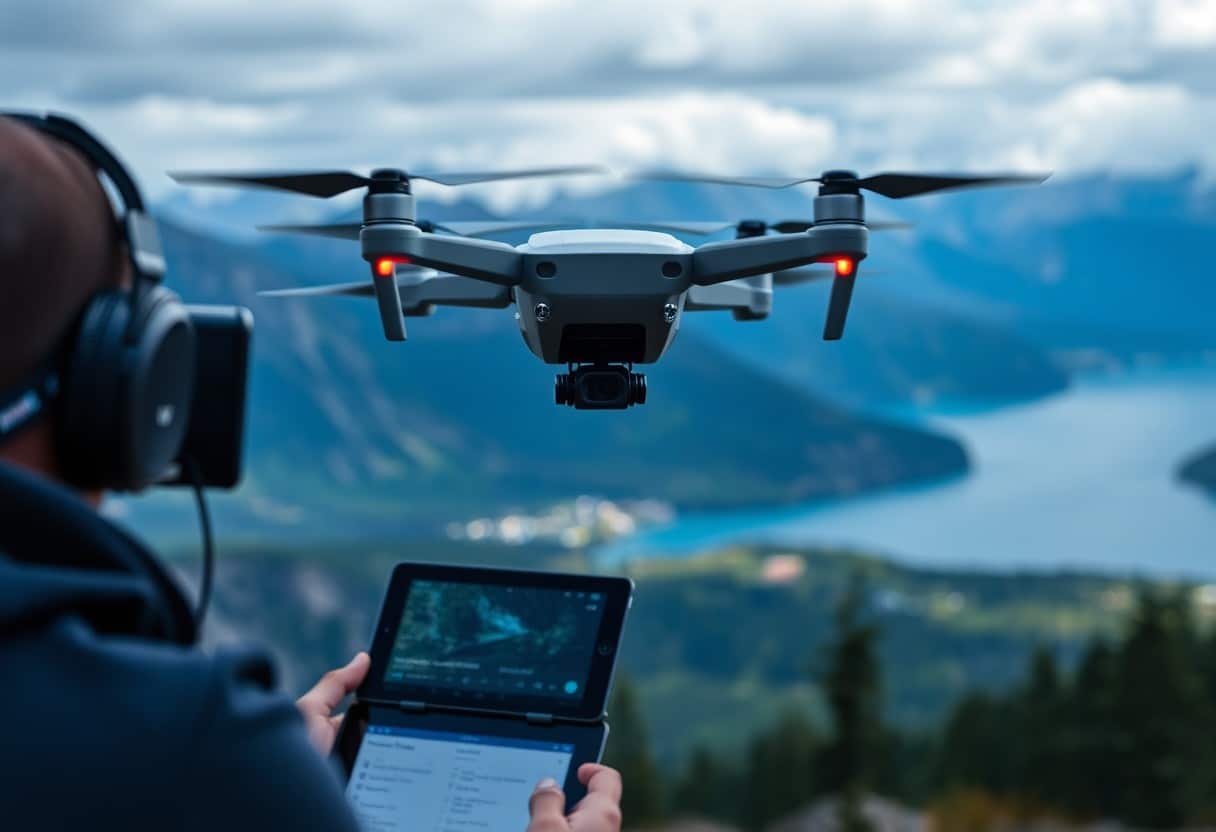
Mastering Drone Control
To become a good drone photographer.Mastering drone control techniquesIt is indispensable. You need to have a thorough understanding of the basic functions and operation of the drone so that you can confidently handle various situations during the shooting process. Your ability to control the drone will have a direct impact on the final result of your photography, so familiarizing yourself with each of the controls is the first step in improving your skills.
Practice the basic movements
While learning drone control.Practice the basic movementsIt's a very important part of the game. You can start with basic maneuvers such as takeoff, landing, hovering and turning. These fundamentals are the building blocks of your advanced maneuvers, and regular practice will help you stay calm in the face of challenges and ensure stability in your shots.
Learn Advanced Skills
Once you've mastered the basics, it's time to get down to business. Learn Advanced SkillsThis includes complex flight modes and creative camera angles such as stabilization and follow-through on the move. This includes complex flight patterns and creative camera angles, such as stabilizing and following while moving. With these techniques, you can create more attractive and professional-looking images.
- Familiarize yourself with the different flight modes
- Understand how to shoot with automation
- Practice flying in all weather conditions.
Advanced Technique Details
| finesse | descriptive |
| Photography through Creative Mobility | Creating motion pictures with drone motion photography |
| Follow Shot Mode | Allow drones to automatically track targets and stay in focus |
Advanced techniques will not only enhance your shooting effect, but also improve your confidence in handling the drone. These skills need to be practiced and adjusted in actual operation. It is recommended that you attend more related workshops or operation exercises, and communicate with other enthusiasts to improve your skills.
- Enhancement of the picture with a change of scene
- Explore different shooting heights and angles
- Learn post-production tie-in control techniques
Learning the Elements of Advanced Skills
| key constituent | Description |
| Wind Direction and Airflow | Learn safety tips for flying with the wind |
| Shooting Program | Develop a detailed shooting schedule and plan |
Plan your shots
Prior to the commencement of the drone shoot, theEffective Programs are the Key to SuccessYou need to think carefully about the location, the light and the time of day. You'll need to think carefully about location, lighting, and timing to ensure that your lens captures the best possible image. This helps to improve the quality of your movie, making it more attractive and professional.
Survey of Shooting Locations
Prior to finalizing the filming location.Exploration and investigation are of paramount importanceYou should visit each potential location to observe its environmental features and light conditions and background. You should personally visit each potential location and observe the environmental features, lighting conditions and background to make an informed choice for the image you are about to capture.
Create a list of lenses
Creating a detailed shot list can help you keep your shoot organized and efficient. This list will not only summarize each shot, but will also include the angle, time of day, and important details to make sure you don't miss any key shots during the shoot.
existCreate a list of lensesConsider the different scenes and the details to be captured. Designate a specific time and angle for each shot and record the intent of each shot. In addition, include notes to remind yourself of ideas for composition, movement, or special effects so that you can maximize your shooting time and ensure that you get the best out of each shot.
Use of appropriate lighting
In the drone shoot.Good lightingIt is one of the key factors affecting the quality of the picture. Choosing the right time and environment for shooting can greatly enhance the visual effect of the movie. Understand the characteristics of different shooting lights, and master the10 Steps to Mastering the Rules for Commercial Use of DronesIt will help you to create more attractive videos.
Shooting in the golden hour
The Golden Hour is the short period of time after sunrise and before sunset when the light is soft and colorful and will add natural color and detail to your drone shots.
Avoid midday glare
The midday sun is strong and direct.Produces excessive shadows and high contrast.This may result in poor image performance. Avoiding this time of day can greatly improve the quality of your images.
At midday, the light source ofStrong directionalityIf you do not want to avoid taking pictures at midday, it is advisable to find a sheltered place or to use a camera that is not shaded, as this will cause the projection of the subject to be too obvious, making the picture look unnatural and even causing some of the details to be lost. Therefore, if you can't avoid shooting in the middle of the day, we recommend that you look for a sheltered place or use thefiltersThis reduces the intensity of the light, which reduces the amount ofStrong contrastThe result is a more balanced and softer look to your images.
Compose your lens
When it comes to drone photography, proper composition is key to improving the quality of your movie. Make sure you understandCompositional PrinciplesThis is the only way to create a compelling image. Suggested referencesWhat aerial composition tips make your drone photography stand out?The program is designed to enhance your skills and inspiration.
Follow the rule of three equal parts
The rule of thirds is a basic compositional technique that can help you create more attractive shots. Dividing the image into nine equal parts and placing your subject at intersections or lines directs the viewer's eye and adds balance to the image.
Explore different perspectives
One of the great attractions of drone photography is the ease with which you can explore a wide variety of locations.Shooting Angle. From high up to low down, each angle conveys a different emotion and story. Take the time to experiment with different perspectives and you'll be amazed at what these small changes can do!Visual EffectsThe
When exploring different perspectives, considerEnvironmentandThemeThe relationship between the subject and the environment. A low angle can enhance the presence of the subject, while a high angle of view can show the surrounding environment and emphasize the sense of space. It's not just a matter of technique, it's an expression of creativity. Challenge yourself to discover new perspectives and realize how they affect your audience's emotional response.
Optimize camera settings
In Drone Photography.Optimization of camera settingsThis is a key step in getting the best possible results. You'll need to carefully adjust each setting to ensure that the resulting images are sharp and dynamic, and that the picture quality remains stable under changing lighting conditions.
Adjusting ISO and Shutter
During the shooting process, the correctISOrespond in singingShutter speedSetting is crucial. You need to adjust the ISO according to the ambient light, usually choosing a lower ISO to minimize noise when there is enough light, and choosing the right shutter speed to capture the action.
Select the appropriate resolution
Choosing a drone cameraresolution (of image, monitor etc)It can significantly affect the shooting effect. It is recommended that you use a higher resolution when filming to get more detail and increase flexibility in post-editing. In different scenes, make sure you choose a resolution that will maximize the character of your subject, especially if you need to zoom in and out or edit, as a high resolution will provide satisfactory results.
Record high quality audio
In drone filming, the quality of the audio is equally important. High-quality audio can greatly enhance the professionalism of your movie and make it more immersive for your audience. You can refer toStep by Step - The 6 Best Techniques for Drone 3D ModelingA guide to further mastery techniques.
Using an external microphone
For clearer sound qualityYou should consider using an external microphone.A professional microphone can significantly improve your recording, especially in windy or otherwise noisy environments. Built-in microphones often fail to capture the subtleties of sound, and using a professional microphone can dramatically improve your recordings, especially in environments with high levels of wind or other noise.
Monitor Volume Level
When recording audio.It is important to monitor the sound level. Too high a volume can cause distortion, while too low a volume can result in the loss of important details. Using professional audio monitoring equipment allows you to make real-time adjustments to your recordings to ensure that the final sound quality produced is optimal.
During the recording process, make sure you keep an eye on the meter readings.This way you will be able to identify and resolve any potential problems in a timely manner.If the volume is too high, noise will distort the sound. If the volume is too high, noise will distort the sound; if the volume is too low, then the audience may not be able to hear what you are saying. Therefore.Continuous monitoring of volume levelIt is an important step to ensure the quality of the audio.
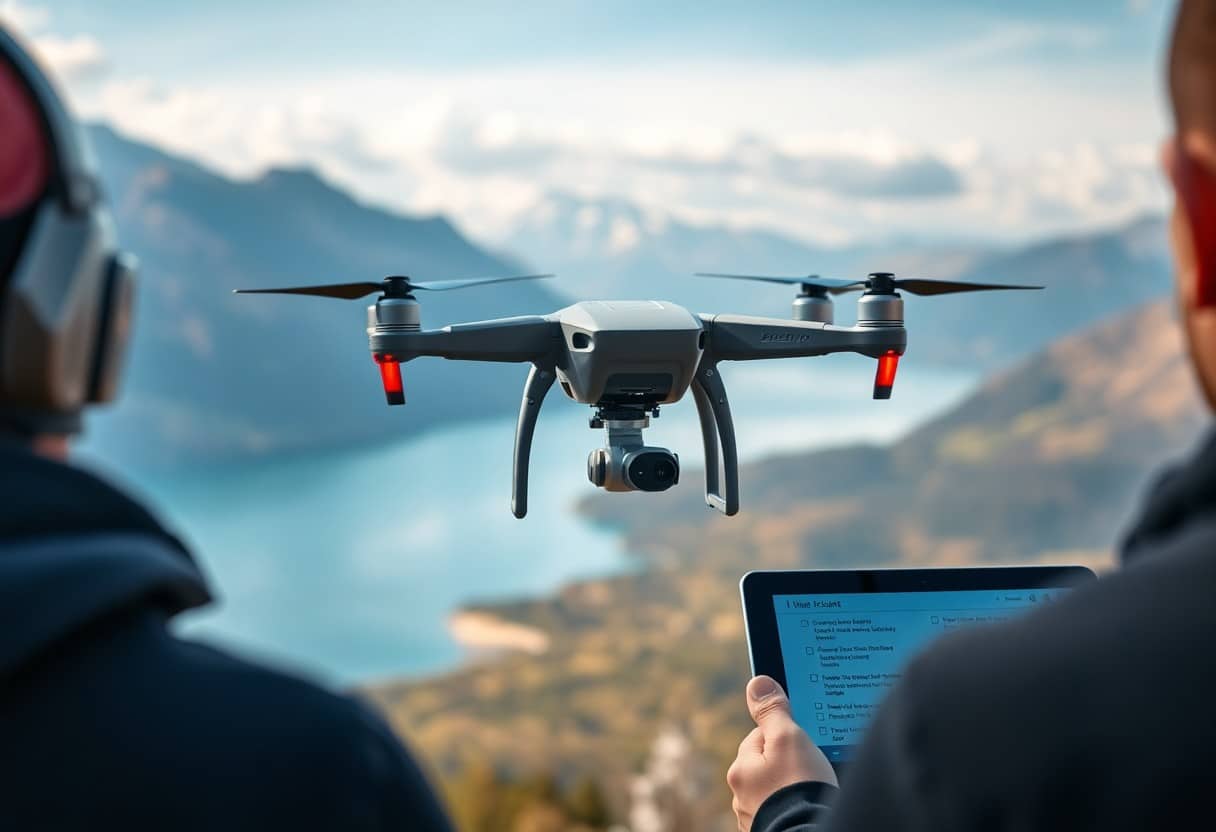
Edit your movie
After you've finished shooting, editing is a key step in enhancing your drone images. With effective editing, you canHighlight important momentsYou'll be able to create a more compelling visual experience for your audience. At this stage, you have the ability to adjust colors, cut unwanted footage, and present the perfect film to your audience.
Using Editing Software
Choose the right oneEditing SoftwareIt's the first step in improving the quality of your movie. Whether you choose professional software or a simple application, knowing its basic functions will help you edit more efficiently. Familiarizing yourself with these tools will make your movie editing work more smoothly.
Adding Effects and Transitions
Adding effects and transitions to your movie can make it more professional and engaging. By using these techniques, you can ensure that your video not only commands attention, but also emphasizes important narrative elements.
After adding theEffects and transitionsYou can use fades, animation effects, or camera switches to direct the viewer's attention. These elements not only enhance the flow of the movie, but also the emotional depth of the story. However, don't overdo it, as too many effects can distract your audience from the theme and content of your movie. Keeping it simple but effective makes your movie more appealing and professional.
Share your work
On a journey of drone photography.Share your workIt's an important step in building your personal brand and expanding your audience. Not only does it get you feedback, but it also attracts potential clients or partners. By sharing your videos, you can showcase your talent and build credibility within your industry.
Utilizing Social Media
Social media isShowcaseand a powerful tool for interacting with your audience. Through platforms such as Instagram, YouTube and Facebook, you can quickly share your drone videos and get instant feedback and support. Make sure to update regularly and interact with your fans, which will help boost your visibility in the field.
Building a Portfolio
Create aProfessional PortfolioA great way to show off your drone photography skills. Choose your best work and make sure it showcases your unique style and creativity. A portfolio will serve as the best proof of your skills and attract the attention of potential clients.
Your portfolio is not only a showcase of your abilities, but also a symbol of your professional image. Select those that best represent you.Creativity and TechnologyWe will make sure that the videos have high quality picture and smooth editing. During the production process, consider adding some backstory so that viewers can better understand the meaning and inspiration of your work. Also, keep your portfolio up-to-date, replacing old work regularly as your skills improve, so that your audience can see your progress and growth.
The Ultimate 10-Step Drone Photography Technique
With this 10-step guide, you'll improve your drone photography skills and make your images more professional and compelling. From the basics to creative dimension, each step will solidify your photography skills and set you apart from the rest in this fast-moving field. Keep practicing and exploring, and the possibilities of your work will be endless.
Frequently Asked Questions
Q: What is "The Ultimate 10 Steps to Drone Photography"?
A: The Ultimate 10-Step Drone Photography Technique is a comprehensive guidebook designed to help photography enthusiasts and professionals improve their drone photography skills, covering everything from the basics to advanced shooting techniques.
Q: Who is this program for?
A: This course is suitable for anyone interested in drone photography, including beginners, intermediate and advanced photographers. Whether you are new to drone photography or a professional looking to enhance your existing skills, you will benefit from this course.
Q: What are the key steps in the program?
A: The course consists of ten major steps covering drone selection, basic operating techniques, photo composition, lighting techniques, image editing, legal regulations, and professional shooting plan, etc. It helps students to master comprehensive drone photography skills.
Q: What equipment do I need to attend this program?
A: Candidates are required to own a drone (preferably a model with camera functions). In addition, it is recommended to have appropriate camera equipment such as cameras, stabilizers, and editing software to be able to practically operate and edit the video.
Q: Is this course online or face-to-face?
A: "Ultimate 10 Steps to Drone Photography" course is online, students can study according to their own schedule, and repeat the video and practice the course content at any time, suitable for all kinds of learning needs.
Q: Will I receive any certificates or accreditations upon completion of the program?
A: Upon completion of the course, participants will receive a certificate of completion, which serves as a proof of your drone photography skills and will be useful for future career development or business expansion.
Q: Can I request a refund if I am not satisfied with the program?
A: Yes, if the course does not meet your expectations within a certain period of time, you can apply for a full refund according to our refund policy, details of which can be found on our official website.
